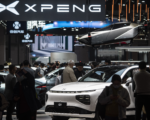China Overtakes U.S. in Nuclear Fusion Race with Major Investments and Breakthroughs

As the world races to unlock the potential of nuclear fusion, China is emerging as a serious contender to overtake the U.S. in mastering this near-limitless form of clean energy. In Shanghai, the burgeoning tech hub that showcases China’s innovations in 6G internet and robotics, a small start-up called Energy Singularity is pushing the boundaries of nuclear fusion research.
For decades, the U.S. led the global effort to replicate nuclear fusion, the process that powers the sun, on Earth. But with China’s recent surge in investment and technological advancements, U.S. experts are increasingly worried about losing that edge. China’s government is currently outspending the U.S. on fusion energy research, with estimates suggesting Beijing invests between $1 billion to $1.5 billion annually, compared to the U.S. government’s $800 million.
Fusion is a difficult process to harness, but its potential is immense. A controlled fusion reaction could generate four million times more energy than burning fossil fuels, and four times more than nuclear fission, without producing long-lived radioactive waste. While fusion won’t be a near-term solution to climate change, it holds promise for addressing the world’s long-term energy needs.
China’s rapid progress is reflected in companies like Energy Singularity, which has built its own fusion reactor, known as a tokamak, in just three years—faster than any comparable machine to date. The start-up has also pioneered the use of advanced high-temperature superconducting magnets, which allow for smaller, more efficient reactors. Its ambitious timeline aims to prove commercial viability by 2027, with grid-ready fusion power by 2035.
Meanwhile, U.S. tokamaks are aging. Andrew Holland, CEO of the Fusion Industry Association, noted that American researchers now rely on machines in Japan and Europe for much of their work. In contrast, China’s state-of-the-art fusion park, CRAFT, is set to open next year, with no similar facility in the U.S.
China’s strategy includes leveraging American designs. According to Holland, several Chinese fusion reactors resemble U.S. designs from companies like Commonwealth Fusion Systems and Helion. This echoes previous patterns in other industries, where China has rapidly followed U.S. innovations and then dominated global supply chains, as seen with solar technology.
While China races ahead with tokamak technology, the U.S. is diversifying its approach. Last year, researchers at the Lawrence Livermore National Laboratory achieved a milestone using lasers to generate more energy from a fusion reaction than they put in. However, the tokamak remains the most advanced and well-researched fusion concept, and with China’s immense funding, it is evolving rapidly.
The stakes are high. Whichever country succeeds in taming nuclear fusion could reshape the global energy landscape. With China pouring over a billion dollars annually into fusion research, it may soon surpass the private investment driving U.S. innovation. If successful, China’s breakthroughs could redefine its role in global energy production, powering not only its iconic light shows but casting the country as a leader in the future of clean energy.

















